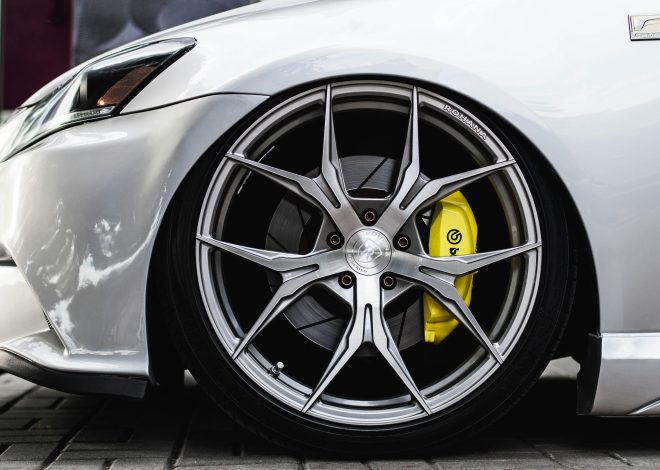
How to choose the right car mirrors?
How to choose the right car mirrors?
When it comes to driving, visibility is key – and your car mirrors play a crucial role in keeping you safe on the road. Whether you’re navigating busy city streets or cruising down the highway, having the right car mirrors can make all the difference. In this guide, we’ll dive into everything you need to know about choosing the perfect set of car mirrors for your vehicle. From different types and features to maintenance tips and more, let’s mirror, mirror on the car – which one is truly the fairest of them all?
The importance of car mirrors
Imagine driving without being able to see what’s happening behind you – it would be like navigating a maze blindfolded. That’s where car mirrors come into play, serving as your eyes at the back of your head. They provide essential visibility, allowing you to monitor traffic, spot potential hazards, and make safe lane changes.
In essence, car mirrors act as your silent sidekicks on the road, offering a clear view of what’s going on around you. Whether you’re parallel parking in a tight spot or merging onto a busy freeway, these reflective surfaces give you the confidence to maneuver with precision.
Don’t underestimate the power of properly adjusted mirrors – they can be lifesavers in unexpected situations. So next time you buckle up and hit the road, remember that your trusty car mirrors are there to watch your back (and sides)!
Different types of car mirrors
Car mirrors come in various types, each serving a specific purpose on the road. The most common type is the side mirror, mounted on the sides of the car to provide a view of adjacent lanes. These mirrors are essential for changing lanes car mirrors and monitoring traffic around you.
Another type is the rearview mirror, typically located inside the vehicle above the windshield. This mirror allows drivers to see what’s happening behind them without turning their heads excessively. It’s crucial for keeping an eye on vehicles approaching from behind or emergency vehicles.
Some cars also have blind spot mirrors, which are smaller convex mirrors attached to the side mirrors. They help eliminate blind spots by providing a wider viewing angle for safer lane changes.
In addition, some modern vehicles come equipped with auto-dimming mirrors that reduce glare from headlights at night automatically. These advanced features enhance driving visibility and safety in challenging conditions like nighttime driving or adverse weather.
When choosing car mirrors, consider your specific needs and preferences based on your driving habits and comfort level while ensuring they comply with safety regulations.
Factors to consider when choosing car mirrors: size, shape, and material

When it comes to choosing the right car mirrors, size, shape, and material play a crucial role in ensuring safety and visibility on the road.
Consider the size of the mirror. Larger mirrors provide a broader field of view but may cause blind spots if too big. Smaller mirrors offer less coverage but can reduce blind spots.
The shape of the mirror also matters. Convex mirrors have a curved surface that widens the viewing angle but may distort objects. Flat mirrors offer accurate reflections but with a narrower range.
Pay attention to the material of the mirror. Opt for high-quality glass that is shatter-resistant and provides clear visibility in various weather conditions.
By carefully evaluating these factors based on your driving needs and preferences, you can select car mirrors that enhance your overall driving experience while prioritizing safety on the road.
Tips for adjusting and maintaining car mirrors
Adjusting your car mirrors properly is crucial for ensuring a clear view of the road around you. Start by sitting in your normal driving position and adjust the rear-view mirror to frame the entire back window. The side mirrors should be classic car carpet suppliers positioned so that there is little overlap with the rear-view mirror.
To avoid blind spots, angle your side mirrors slightly outward. Test this by looking out each mirror and adjusting until you can barely see the side of your own car. Regularly check and readjust your mirrors as needed, especially if different drivers share the same vehicle.
Keep your mirrors clean from dirt, dust, or water spots that can obstruct visibility. Use a soft cloth or specialized glass cleaner for optimal results. Remember to check for any cracks or damage regularly and replace them promptly to ensure safety on the road.
Advanced features of modern car mirrors
Modern car mirrors come equipped with advanced features that enhance safety and convenience on the road. One popular feature is auto-dimming mirrors, which automatically adjust to reduce glare from headlights behind you. This technology helps improve visibility during nighttime driving.
Another innovative feature is blind-spot detection, which alerts drivers of vehicles in their blind spots through visual or audible signals. This assists in making lane changes safer and more efficient. Some car models also offer power-folding mirrors, allowing drivers to fold them with the touch of a button for tight parking spaces.
Integrated turn signal indicators on side mirrors provide clear communication to other drivers when you intend to change lanes or make a turn. Additionally, some modern cars are equipped with cameras that display live feeds of surrounding areas, enhancing overall visibility while maneuvering the vehicle.
Pros and cons of different types of car mirrors
When it comes to choosing the right car mirrors, understanding the pros and cons of different types can help you make an informed decision.
Traditional manual mirrors offer simplicity and reliability. They are easy to adjust and have no electrical components that could malfunction. However, they may require more frequent adjustments while driving compared to newer automated options.
Automated mirrors provide convenience with features like automatic adjustment, defrosting, and even blind-spot monitoring in some models. These advanced functionalities enhance safety and visibility on the road. On the downside, these high-tech mirrors can be more expensive to repair or replace if damaged.
Blind-spot mirrors are a popular add-on for drivers looking to improve visibility around their vehicle. These small convex mirrors can help eliminate blind spots but may also cause distortion in your peripheral vision.
Choosing between manual, automated, or additional blind-spot mirrors ultimately depends on your preference for convenience versus cost-effectiveness when considering maintenance and potential repairs down the road.
Conclusion
Choosing the right car mirrors is crucial for safe driving and overall vehicle functionality. By understanding the different types of car mirrors available, considering factors like size, shape, and material, knowing how to adjust and maintain them properly, as well as being aware of advanced features in modern car mirrors, you can make an informed decision that suits your specific needs.
Remember that each type of mirror has its pros and cons, so it’s essential to weigh these factors against your preferences and driving habits. Whether you opt for traditional side mirrors or explore newer technologies like blind-spot detection systems, prioritize visibility and safety when selecting your car mirrors.
Investing time in selecting the right car mirrors will enhance your driving experience by providing clear views of surrounding traffic and ensuring safer journeys on the road. Stay informed, stay safe!


